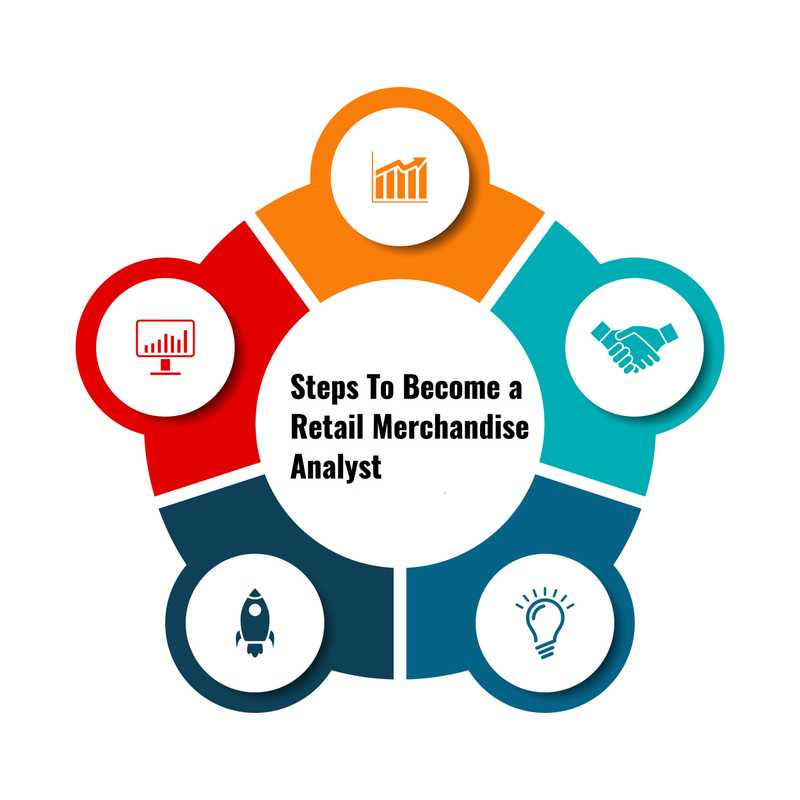How To Become a Retail Merchandise Analyst

In this article
The observation that data is king in today’s market has almost become a cliché. To profit from this kingdom, you need a specific niche and target. One strong sector belongs to the retail analyst, which might be the right career for you.
There are many routes to becoming a retail merchandising analyst, but all require mastering certain skills and technical knowledge. Here is a comprehensive guide with five steps to help you become a retail analyst, including key skills, job roles, and responsibilities.
5 Steps To Become a Retail Merchandise Analyst

-
Get the right education
-
Develop your skills
-
Leverage your experience and connections
-
Build your resume
-
Apply, apply, apply
How can you enter this quickly growing field? In many ways, the steps are the same as if you wanted to apply for any data analyst job.
First, you want to develop the right portfolio of skills, education, and experience. Then, you need to nail the self-presentation and application elements to make the right impression on hiring managers.
1. Get the right education
Most retail merchandise analysts— about 80%—have a bachelor’s degree. Popular majors include business, accounting, and economics. Statistics and computer science are also useful.
However, you can learn data science without a degree. You can even go on to have a successful career as an analyst with a GED or high school diploma if you take advantage of the right online learning courses and communities.
Regardless of your degree, you need a solid background in data analysis methods. Predictive analytics will prove especially helpful in a retail analyst career. You’ll need to learn trends in purchasing patterns to develop your inventory strategy.
In addition to data analysis, you’ll want to gain retail-specific knowledge and experience. Read papers or take classes in these fields. Study buyers’ decision-making processes, seasonal trends in purchasing, and the roles of different product outlets in major corporations.
2. Develop your skills

As a retail analyst, you’ll need to demonstrate proficiency or even expertise in computer programs such as Microsoft Excel and Access. Certifications in these areas can help prove your competence—particularly if these skills are not self-evident in your day-to-day work life.
After managing and analyzing data, a merchandise analyst reports on this information. You will compile and distill it to back up your recommendations and enable others to come to conclusions of their own.
As a result, strong communication skills—both written and oral—are a must. You’ll also need data visualization skills. The ability to create infographics that demonstrate data trends will come in handy.
Get To Know Other Data Analytics Students
Joel Antolijao
Data Analyst at FanDuel
Rahil Jetly
Sales Operations Manager at Springboard
Gilles Ngomeni
Sales Analyst at Medline Industries
Tip 1. Create a portfolio website
Beyond acquiring these skills, you want to show them off, allowing hiring managers to take a look at all you can do. Create a portfolio website if you don’t have one. Consider using WordPress or Github, both strong platforms for data scientists.
Once you have the website, populate it with your own projects. Write reports and build visualizations that respond to real-world concerns. It’s even better if you can direct your project towards data science use cases in retail.
3. Leverage your experience and connections

Not all job experience has to be in analyst fields. In fact, many merchandise analysts have retail experience in other areas. Some job descriptions even require previous experience in retail roles such as an assistant buyer.
Whether you’ve worked as a sales associate or a store manager or created a small Etsy store, highlight the relevant skills developed in this position.
You should also let your networks know that you want to move into a career as a retail analyst. Both online data science communities and connections made through previous work experience may know of openings or have other helpful suggestions.
4. Build your resume
Use a professional template and input all the necessary information, highlighting your professional experience, relevant education, and online portfolio.
Tip 2. Use keywords and numbers
Many companies use applicant tracking systems (ATS) to process large volumes of applications. ATS software often ranks applicants for skill-focused keyword compatibility. Make sure to note technical skills: computer programs or languages and methods of analysis. Words like “statistics” and “sales” should also make appearances.
Whenever possible, quantify your achievements. Doing so makes your value more concrete to employers. Use hard numbers that demonstrate the impact of your contributions.
Tip 3. Adjust your resume to target specific jobs
Remember that you’re not trying to sell yourself as the perfect person. You want to be the perfect applicant. Tailor your resume for each job to best fit the posted job description.
5. Apply, apply, apply

Make use of listing sites such as Indeed, LinkedIn, and ZipRecruiter. Search out the websites of companies for whom you would like to work, and check out their job postings. Talk to friends in the field, and ask if they know anyone who’s hiring.
The application process can be grueling but stick with it. Like anything else, applying is a skill, and you’ll get better with practice. Even when it doesn’t seem like you’re progressing, you are.
Retail Merchandise Analyst Salary
In 2021, ZipRecruiter highlighted that the average annual salary for a retail analyst in America is $52,531, which averages out to a little over $25 an hour.
Salaries in the field range from $30,500 to $69,000, but the majority fall between $39,500 (about $19 an hour) to $62,000 (a little under $30 an hour).
In addition to varying between positions, salaries vary between locations. For example, ZipRecruiter shows that several locations in California currently trend well above the national average.
Retail Merchandise Analyst Job Description
As a retail merchandising analyst, your primary role is to plan and monitor inventory for a store or chain. A retail analyst’s goal is to maximize profits by analyzing inventory trends and risks and then developing and implementing appropriate strategies for allocation and purchasing.
In smaller companies, merchandising analysts sometimes assume responsibility for supply chain management as well. But, the core duties of a retail merchandise analyst include:
- Developing financial and statistical reports
- Monitoring sales and inventory
- Identifying trends in sales
- Identifying products for clearance
- Maintaining and strategizing for various product outlets such as online stores
- Guiding the company in purchasing strategy
Retail merchandise analysts regularly interact with marketing, buying, and finance departments. You might also work with category managers—managers responsible for a certain segment of products—if the company is large enough to require them.
Since you’re here…
Switching to a career in data analytics is possible, no matter your background. We’ve helped over 10,000 students make it happen. Check out our free data analytics curriculum to gauge your interest, or go all-in with our Data Analytics Bootcamp.



![How To Learn Big Data [7 Places To Start in 2022]](https://www.springboard.com/blog/wp-content/uploads/2022/06/how-to-learn-big-data-7-places-to-start-in-2022-380x235.jpg)

